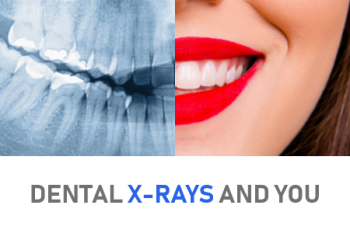Dental X-rays and You; Everything You Need to Know
Posted on January 13th, 2025
 If you have any experience going to the dental office, chances are good you’ve had a dental x-ray. You know the drill, open your mouth, bite down on the hard plastic thing that looks like a Star Wars X-wing ship — then try to keep your eyes from watering while the hygienist drapes you with a heavy apron. The experience isn’t always fun, but it is important for your dental health. Not only that, but there are many other types of X-rays you may encounter during your appointment that you may not know exist. Fuquay Family Dentistry in Fuquay-Varina is here to break down each type of dental x-ray and talk about why they are important and how they are different.
If you have any experience going to the dental office, chances are good you’ve had a dental x-ray. You know the drill, open your mouth, bite down on the hard plastic thing that looks like a Star Wars X-wing ship — then try to keep your eyes from watering while the hygienist drapes you with a heavy apron. The experience isn’t always fun, but it is important for your dental health. Not only that, but there are many other types of X-rays you may encounter during your appointment that you may not know exist. Fuquay Family Dentistry in Fuquay-Varina is here to break down each type of dental x-ray and talk about why they are important and how they are different.
Just like hand-held cameras have made the shift from physical film to digital, so have X-rays. Back in the day (and still in some offices) you would need to wait while your film developed before you could see your x-ray film. Most offices, however, are making the shift to digital X-rays. Digital X-rays are helpful because they are instant and you can see, along with your dentist, what the X-rays show. If you have a cavity, the dentist can point to it on the screen and you can see it too! Digital X-rays also decrease radiation exposure by up to 90% compared to traditional X-rays.
Another distinguishing feature of X-rays is intra vs. extraoral. Just like the names suggest, intraoral X-rays show details of the teeth, so the X-ray film is in the mouth. They help your dentists see cavities and issues caused by gum disease. Extraoral X-rays do not show the teeth in detail, but view the jawbone, facial bones, and skull as the X-ray film is outside the mouth.
Bitewing X-rays are likely the most familiar type of X-rays. Bitewing X-rays are used to X-ray sections of the mouth. Each image will show the teeth, part of the roots, and a small portion of the bone are intraoral. Typically, bitewing X-rays are used to show you and your dentist areas of decay. You will notice discoloration in the image on or between teeth if there is decay present. If you are having traditional bitewing X-rays taken, you will chomp down on a plastic piece; if digital you bite down on a small box.
It is hard to pronounce, but periapical X-rays take an image of teeth in their entirety. So, the image will show a section of a few teeth and you will see everything from the chewing surface to the root. Most of the time, these types of images help your dentist see if there are any problems in or around the root of your teeth.
Full mouth X-rays are a combination of bitewing and periapical. The combination helps your dentist get a full picture of your whole mouth and details on teeth from top to bottom. Full mouth X-rays are often taken if you are a new patient in an office.
Again, just like taking a panoramic picture on your phone of a landscape, panoramic X-rays show your entire mouth in a single image. These images help your doctor see the full picture of your teeth all at once.
Occlusal X-rays are like bitewing X-rays but are primarily done by pediatric dentists.
The American Dental Association has a vast array of information on X-rays and radiation and protocols for patients. Dental x-rays are safe, but always talk to your dentist if you are pregnant or concerned.
If you have any questions, feel free to contact Fuquay Family Dentistry today!
The content of this blog is not intended to be a substitute for professional medical advice, diagnosis, or treatment. Always seek the advice of qualified health providers with questions you may have regarding medical conditions.